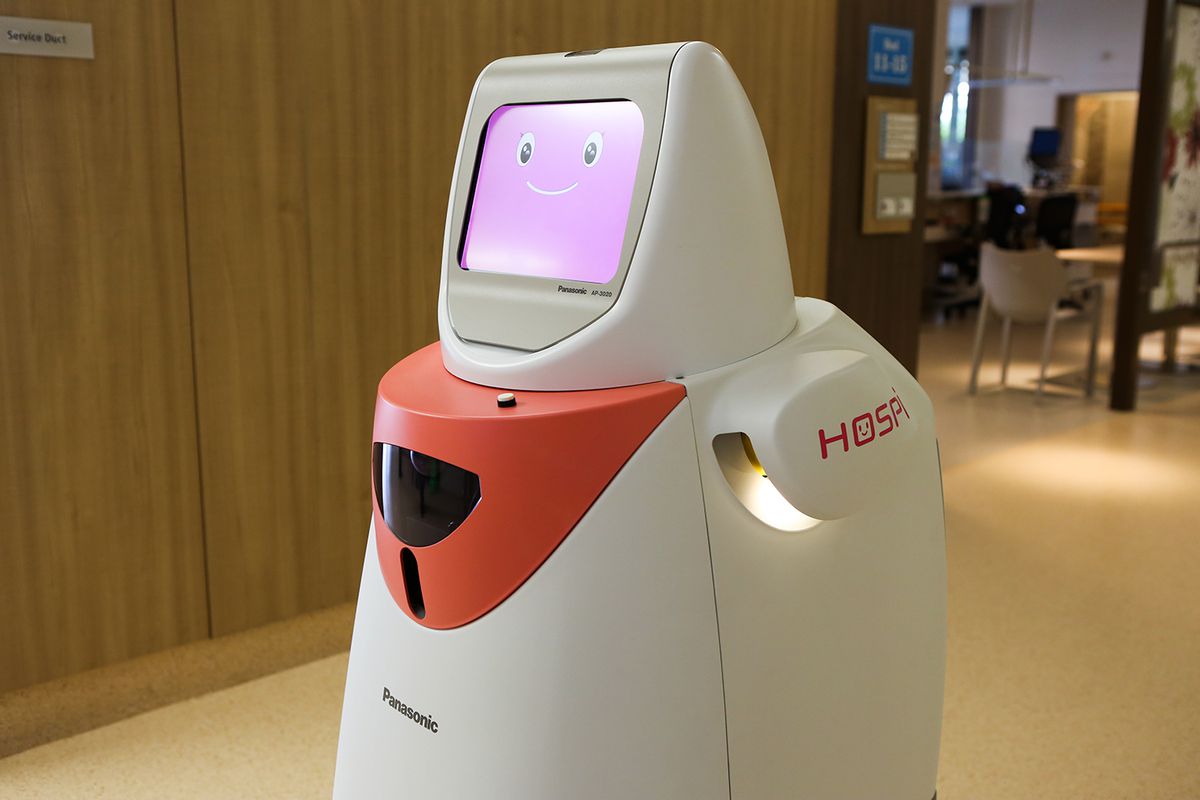Robots in Hospitals Are Making Deliveries and Performing Surgery
Robots carry a precision that humans can never achieve on their own. They can carry weights, perform tasks and do them at a much better rate than humans. Human ability is limited. But that is no longer the case with robots as humans can extend their limited capabilities with specially programmed robots. These robots offer precise movements, added strength, speed and much more. Robots in hospitals seem like a logical step forward.
These are the qualities one might specifically need in the hospital environment. Precision is one thing that hospitals can never get enough of. Even the best of human doctors can never attain the mechanic precision of a well-engineered robot.
And many doctors and hospitals have begun to realize this. There has been a growing demand for robots within the hospital environment that assist doctors and nurses with their tasks. These tasks can range from everyday menial task to diagnosis to actual complex surgery.
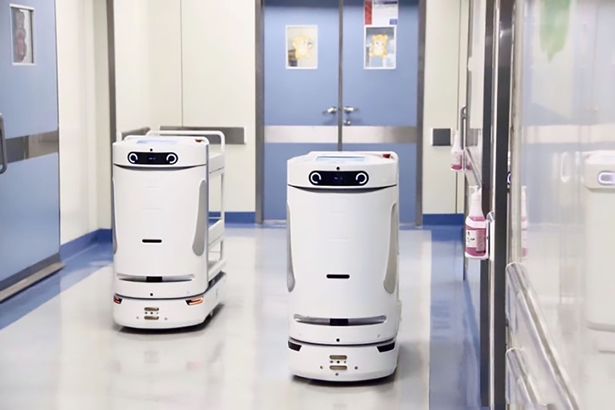
Medical Delivery Robots in Hospitals
Noah is a robot that has been introduced in the Guangzhou Women and Children Medical Centre. This helper robot is designed to fetch medicines, carry documents and get them to where they are needed. Currently, these robots can carry a weight of 330 kg (about 730 pounds) around the hospital. While it is only designed to carry medicines, documents, and other things, the staff at the hospital where Noah’s run say they are capable of much more.
It is estimated that these robots will eliminate over 1200 miles of footwork for nurses and help make nurses more efficient. Nurses can focus on more important tasks and let the Noah robots take care of menial jobs.
These robots have a GPS system that helps them to navigate the complex wings of the hospital while also not bumping into anyone. They have words and phrases such as “Obstruction!” built into them so that they can warn oncoming ‘traffic’
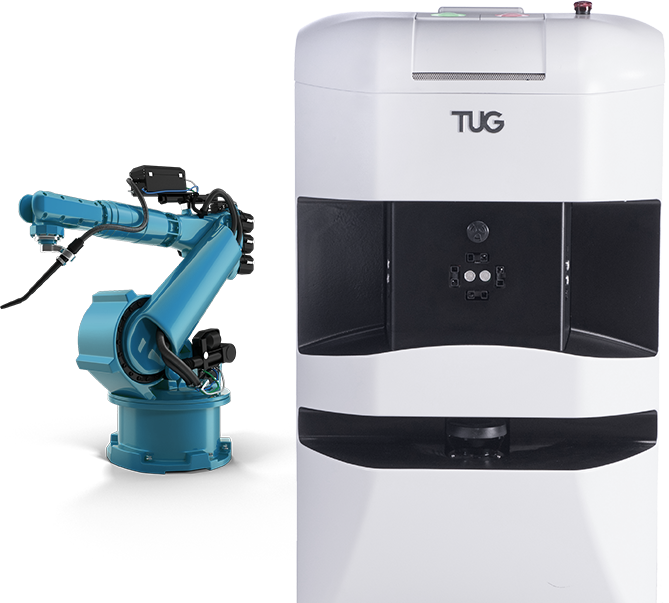
Tug
Tug, another instance of this medical delivery robots in hospitals has made the rounds in other places of the world. This works the same way as the Noah robots. But each of the of the Tug robots are monitored by Aethon, who made them.
Tug navigates the same way many of self-driving do. They use high-tech lasers to map out space in front of them. These maps are surprisingly detailed and in 3D! But it does start out with the basic schematic of the hospital or building it is in and then uses that to find out its’ starting point.
The robots in hospitals navigate through the complex traffic of people and objects with relative ease. They re-route around objects and humans and are careful not to bump into people walking. But that does not mean that they would not get stuck at all. While Aethon does keep an eye on every model, humans might have to give Tug a little hand should it get stuck somehow.
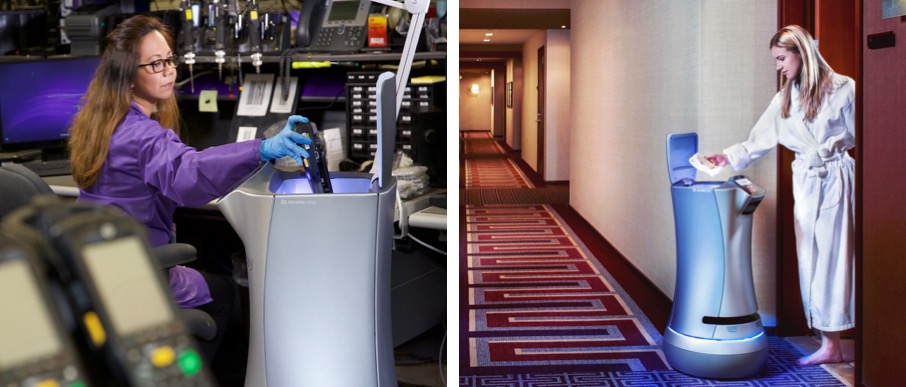
Savioke Relay
Another company looking to deploy delivery robots in hospitals is Savioke. Known for their hotel delivery robot Relay, the company recently announced a $13.4 million fund for their new robots in hospitals. These robots are said to work in the same way as their hotel counterparts, of course with altered specifications.
They have successfully raised over $31 million with investors such as Qualcomm Ventures. This is the same Qualcomm Ventures that is responsible for making a lot of the tech behind many of the self- driving cars we see today. Brain Corp – backed by Qualcomm Ventures is offering their Brain OS which is known for integrating many off the shelf sensors and modules and effectively integrate them in a robot.
BrainOS has effectively helped many self-driving systems and continues to do so.
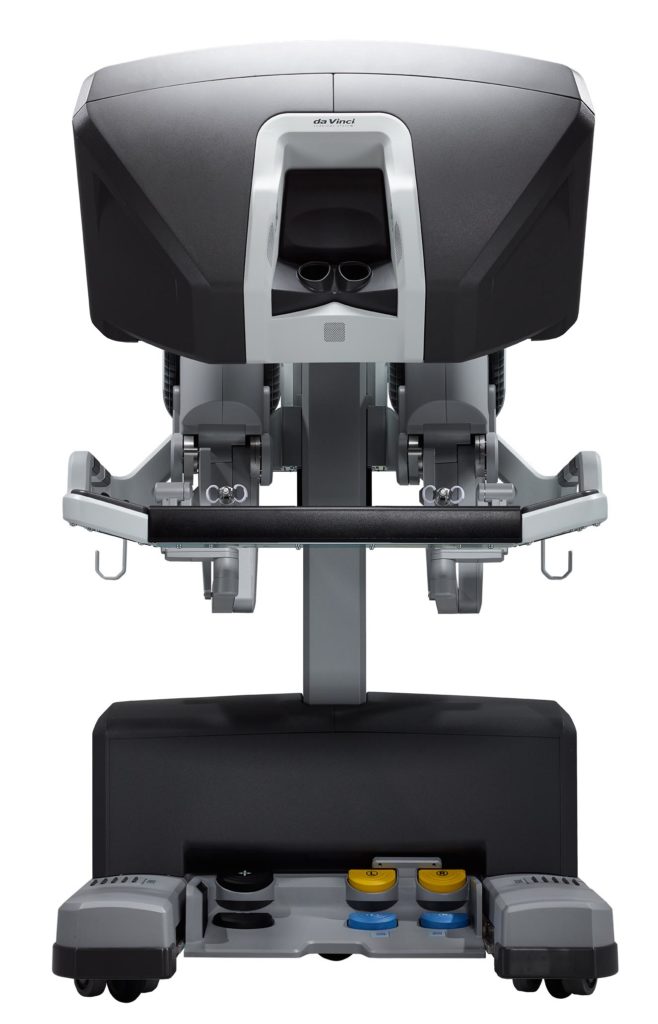
Da Vinci Xi Surgical System Robot
The da Vinci Surgical System robots have been making heads turn in Tyler, Texas since 2009. However, in July 2018 they revealed possibly their most impressive machinery. The Xi model is a successor to the previous Si model. Dr. James Caccitolo, who pilots the ‘robot’ says that the biggest advantage they have over the previous model is the added design for multiple procedures.
While the Da Vinci Xi is not technically a robot in the traditional sense, it does provide every bit of precision you would expect from one- but does not perform tasks on its own. The Xi is piloted by Dr. Ciccotolo, who sits in the same room as the patient and the robot controls the machine acutely. He uses his experience and skill to pilot the robot to make precise cuts and incisions.
The small and precise hands allow for much smaller cuts and incisions than humanly possible. One example Dr. Ciccotolo provides is that of lung cancer surgery. He theorizes that he can perform the surgery through a minute incision instead of invasive traditional methods.
As opposed to the older model, the Xi model has arms smaller in diameter. This makes them perfect for surgeries in the chest and abdomen area. The Xi model also sports a high definition camera to view surgeries up close. The four arms of the Xi model can yield a variety of instruments and can easily be changed out. These robotic arms reduce the risk of surgeon fatigue and overall lowers the chance of shaking and mishaps.
The hospital still has two of the older yet still capable Si models.
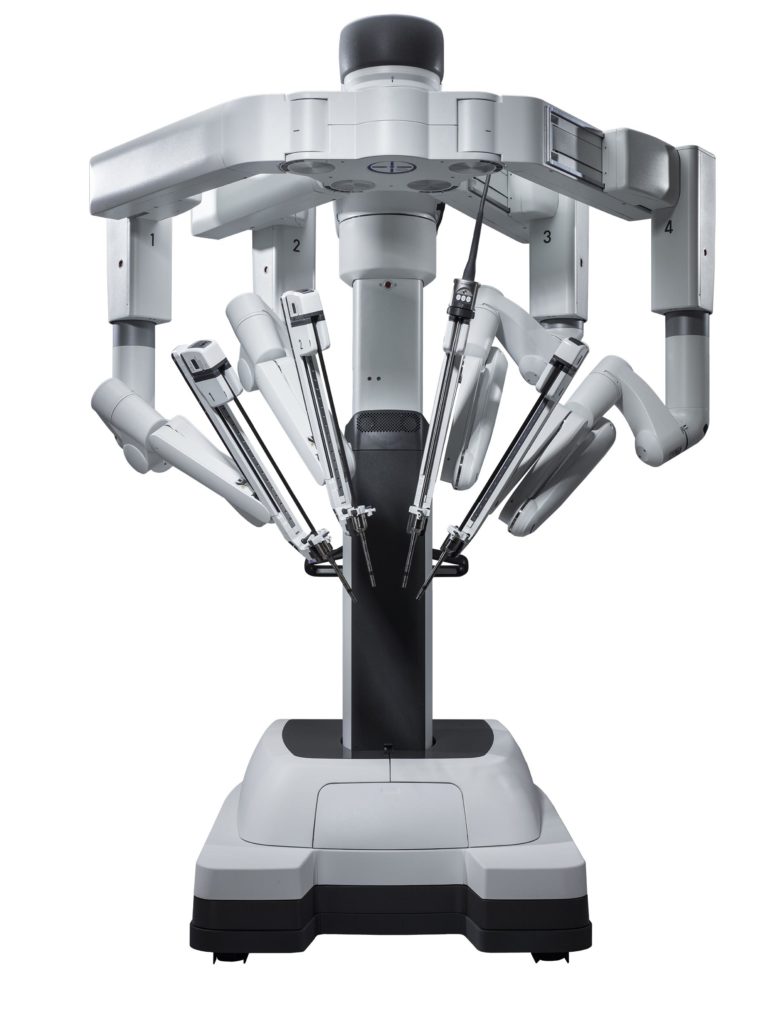
The Xi Robots are expanding to many hospitals across the United States but the spread has been slow. The Xi robot costs around $2 million but the pros far outweigh the cons here. Because of these robots, patients are now facing less hospital stay time, minimal to no scarring and even faster recoveries.
Complex and particularly difficult gynecologic, cardiothoracic, urological and general surgery can be performed with the Xi Robot with high precision and low risks.
The robot has been praised for its non-invasive surgical methods. It is easy to understand why as surgeons controlling the robot can direct the arms to where they wish and have the arms makes incisions or cuts. Human error, which is one of the main causes of failed surgeries is taken out of the equation.
Check out some of our articles.
Speech Recognition in Grocery Shopping Speech Recognition in Cars
Speech Recognition in Customer Service The Future of Speech Recognition Technology
Pet Translators Speech Recognition in Travel
Speech Recognition in Blockchain Speech Recognition in Video Games
Speech Recognition in Advertising Speech Recognition in Health Care

